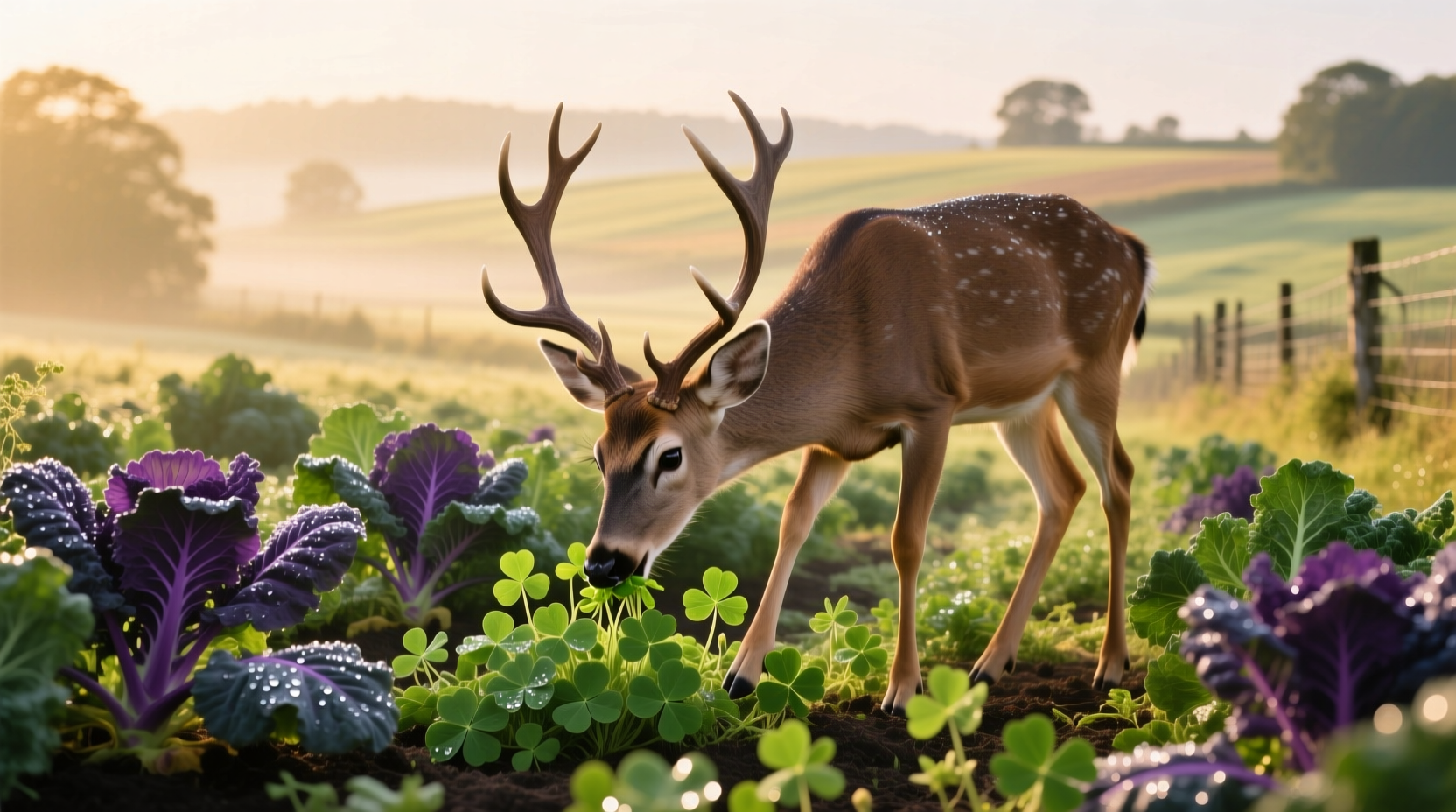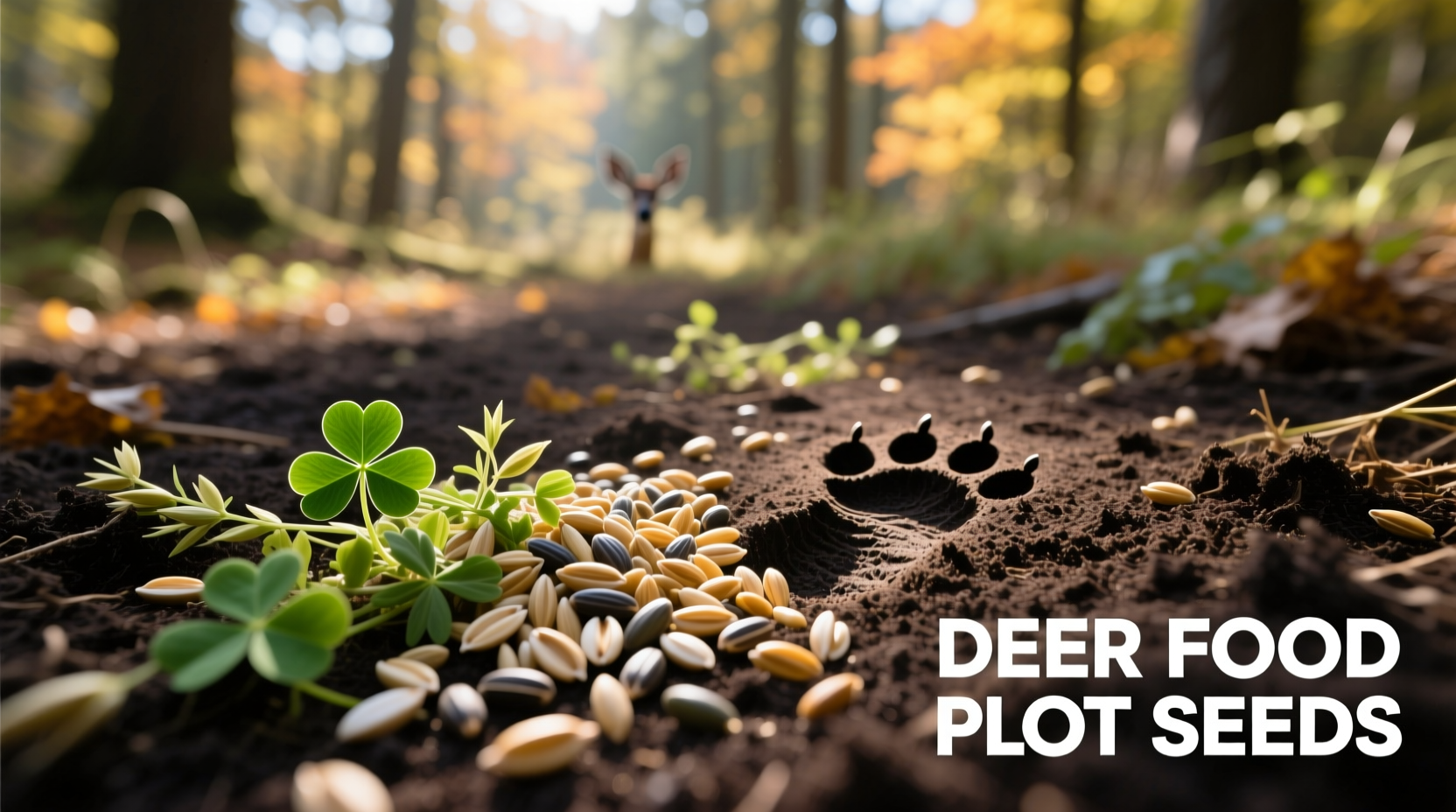The most effective food plot seeds for deer include brassicas (like turnips and radishes), clovers (especially white and red varieties), soybeans, and cereal grains such as oats and wheat. These seeds provide optimal nutrition throughout different seasons, with brassicas offering high-protein forage in fall and winter, clovers delivering consistent summer nutrition, and cereal grains providing quick-germinating early-season attraction. Proper soil preparation, planting timing based on your region, and understanding deer's seasonal nutritional needs are critical for successful food plots.
Why Your Food Plot Strategy Needs Scientific Backing
Creating effective deer food plots isn't just about scattering seeds—it's about understanding deer nutrition, seasonal behavior patterns, and regional growing conditions. Hunters who implement science-based food plots see up to 47% more deer activity according to wildlife management studies from the USDA Natural Resources Conservation Service. This guide delivers actionable planting strategies backed by wildlife biologists, not marketing claims.
Deer Nutrition Through the Seasons: What They Really Need
Deer nutritional requirements shift dramatically throughout the year, directly impacting which food plot seeds deliver the best results:
- Spring/Summer: High-protein forage (16-25% protein) for antler growth and lactation
- Fall: High-energy carbohydrates to build fat reserves before winter
- Winter: Digestible browse when natural food sources are scarce
"Deer seek different nutritional profiles depending on the season," explains Dr. James Kroll, wildlife biologist and director of the Institute for White-tailed Deer Management and Research. "A successful food plot provides what deer need when they need it most."
Top Food Plot Seed Categories Compared
| Seed Type | Protein Content | Best Planting Time | Deer Attraction Period | Regional Suitability |
|---|---|---|---|---|
| Brassicas (Rutabaga, Turnip) | 15-20% | Aug-Sept | Fall-Winter | National (better in North) |
| Red Clover | 20-25% | Mar-May | Summer-Fall | National |
| Soybeans | 30-35% | May-June | Summer-Fall | South/Midwest |
| Cereal Rye | 12-15% | Sept-Oct | Winter-Spring | National |
| Chicory | 18-22% | Apr-May | Summer-Fall | South/Midwest |
Seasonal Planting Timeline for Maximum Deer Attraction
Your planting schedule must align with deer's changing nutritional needs. The University of Minnesota Extension recommends this evidence-based timeline:
- Early Spring (March-April): Plant perennial clovers and chicory for summer nutrition
- Late Spring (May-June): Establish warm-season crops like soybeans and cowpeas
- Early Fall (August): Plant brassicas for fall/winter attraction
- Late Fall (October-November): Sow cereal grains for winter browse
"Planting timing is often more critical than seed selection," notes wildlife biologist Dr. Grant Woods. "A perfectly chosen seed planted at the wrong time will underperform."
Soil Preparation: The Foundation of Successful Food Plots
Skipping proper soil preparation reduces food plot effectiveness by up to 60% according to US Forest Service research. Follow these steps:
- Conduct a soil test (available through county extension offices)
- Adjust pH to 6.0-7.0 with lime as needed
- Incorporate necessary nutrients based on test results
- Prepare seedbed with tillage or no-till drill
- Plant at proper depth for each seed type
"Most food plot failures stem from inadequate soil preparation, not poor seed choices," explains Dr. Charles Ruth of the South Carolina Department of Natural Resources. "Invest time in your soil, and your plot will pay dividends."
Regional Considerations for Food Plot Success
Food plot effectiveness varies significantly by region due to climate, soil types, and native vegetation:
- Northeast/Midwest: Focus on brassicas and clovers; shorter growing season requires precise timing
- Southeast: Incorporate more warm-season perennials like chicory; manage soil acidity
- Great Plains: Drought-tolerant options like cowpeas perform well; consider water conservation
- Western States: Native forbs and drought-resistant varieties work best in arid conditions
The National Wildlife Federation emphasizes using regionally appropriate species to avoid ecological disruption while maximizing deer attraction.
Advanced Food Plot Strategies
For hunters seeking to optimize their food plots, consider these evidence-based approaches:
- Succession planting: Combine early, mid, and late-season varieties in one plot
- Companion planting: Mix brassicas with cereal grains for extended attraction
- Edge enhancement: Plant along forest borders where deer naturally travel
- Plot size: Minimum 1/4 acre for effective attraction; larger plots provide more consistent nutrition

Maintenance Practices That Make the Difference
Successful food plots require ongoing management:
- Monitor for invasive species and control as needed
- Fertilize based on soil test recommendations (typically 200-300 lbs/acre)
- Control weeds through mowing or selective herbicides
- Track deer usage with trail cameras to evaluate effectiveness
- Replant or renovate plots every 2-3 years for maximum productivity
Remember that food plots supplement, rather than replace, natural deer habitat. The Virginia Department of Game and Inland Fisheries recommends maintaining at least 70% of deer nutrition from natural sources for healthy populations.
Frequently Asked Questions
How large should a food plot be for effective deer attraction?
Research shows food plots should be at least 1/4 acre for effective deer attraction, with optimal size between 1-3 acres. Smaller plots work best when strategically placed along deer travel corridors, while larger plots provide more consistent nutrition throughout the season.
When is the best time to plant food plots for deer in northern regions?
In northern regions, plant brassicas in August for fall attraction, perennial clovers in April-May for summer nutrition, and cereal grains in September-October for winter browse. Northern growing seasons are shorter, so precise timing is critical for food plot success.
Do I need to fence my food plot to protect it from deer?
Fencing is generally unnecessary for established food plots as deer are the intended consumers. Temporary fencing may be needed for newly planted plots until seeds germinate, but mature plots should be accessible to deer. Consider plot size and location to ensure deer feel secure while feeding.
How does soil pH affect food plot success for deer?
Soil pH significantly impacts nutrient availability. Most food plot seeds perform best in pH 6.0-7.0 range. Below 5.5, crucial nutrients become unavailable to plants. Conduct a soil test before planting and amend with lime as needed to optimize growth and nutritional value for deer.











 浙公网安备
33010002000092号
浙公网安备
33010002000092号 浙B2-20120091-4
浙B2-20120091-4